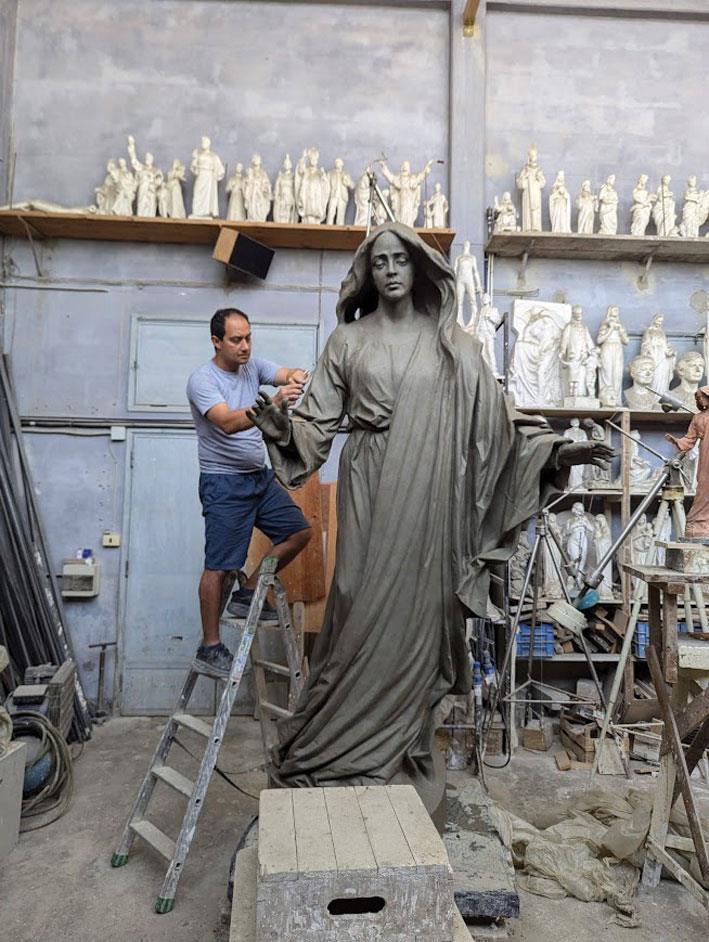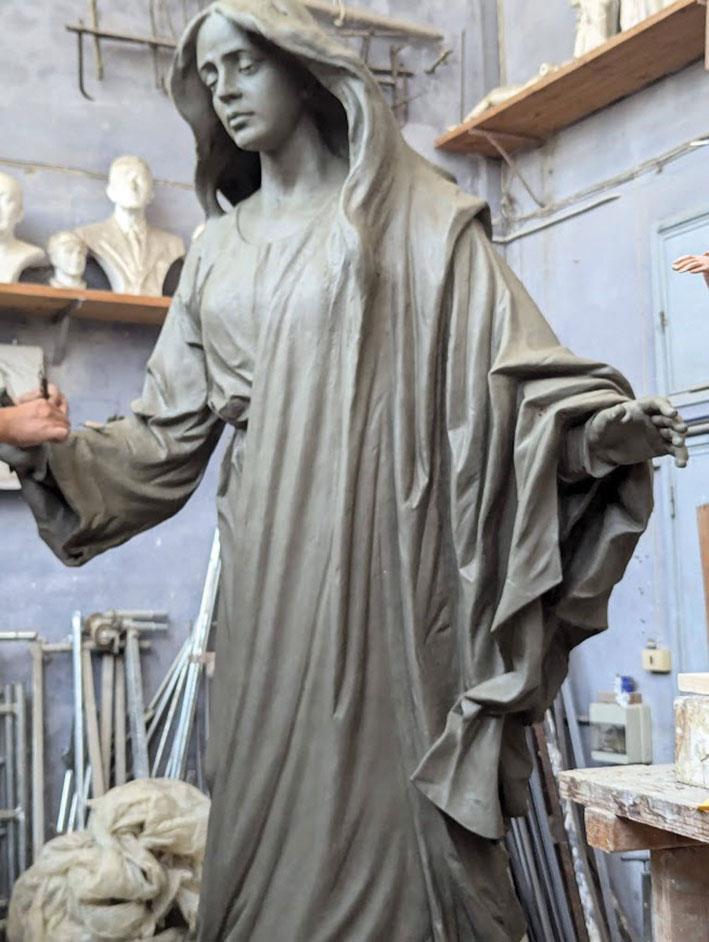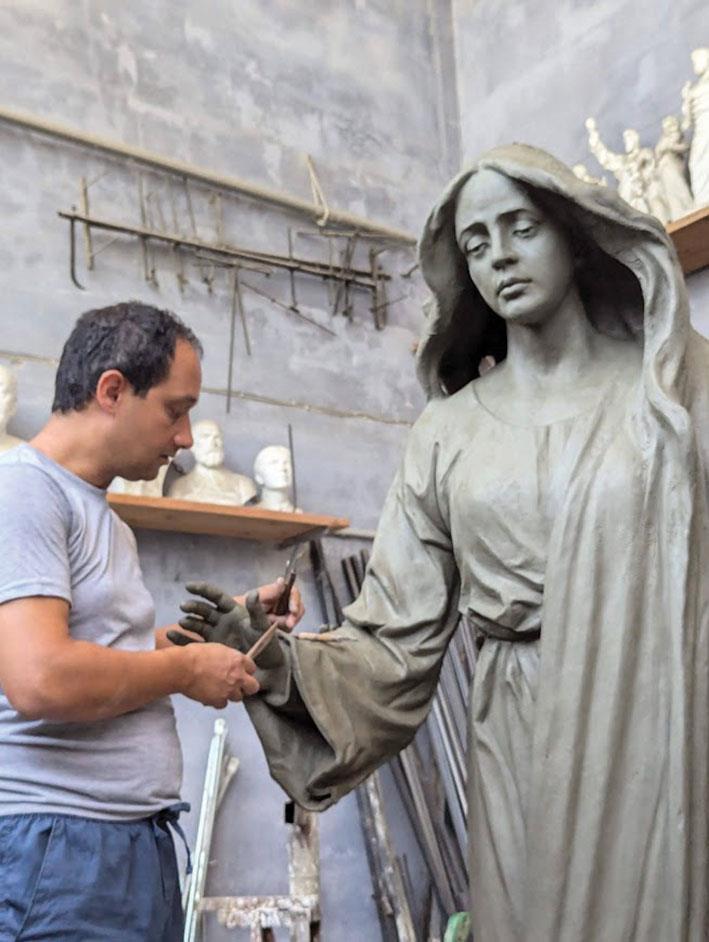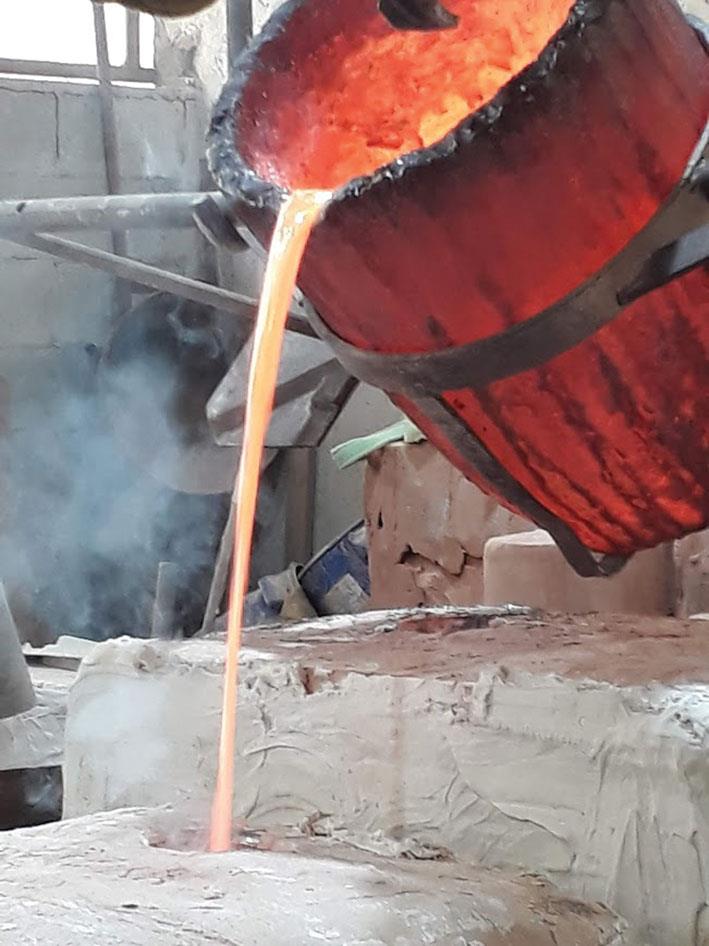Artist Chris Ebejer brings life to clay, delicately shaping the Madonna in his Tuscany studio. What was the inspiration behind the design of this bronze monument, and how does it reflect the spirit or mission of St James hospital
The inspiration behind the design of this bronze monument comes from a deep desire to embody compassion, serenity and healing - the very essence of the hospital's mission. The figure's calm, open arms and flowing robes symbolise welcome, peace and care, values that lie at the heart of the hospital's service to the community. By capturing a serene presence that feels protective and uplifting, the monument stands as a silent guardian and beacon of hope for patients, families and staff alike. It's not just a work of art; it's a spiritual companion in the journey of healing.

Can you walk us through your creative process? How did the concept evolve from initial sketches to the final result?
The creative process began with a series of sketches and concept drawings, where I explored the pose, expression and spiritual presence I wanted the artwork to convey. Once the design felt right, I created a small-scale maquette to refine the composition and ensure harmony in proportions and movement.
From there, I built a full-size armature mould and a strong internal skeleton made of iron that supported the weight of the clay during sculpting. This foundational structure was crucial as I applied layers of clay to shape the figure. The sculpting phase is deeply hands-on and intuitive, allowing me to capture emotion, flow and detailed drapery.
Once the clay model was completed, I created a rubber mould (the negative), usually in multiple sections. From that mould, we produced a wax replica, which was then encased in a ceramic shell for the lost-wax casting process. The wax was melted out, and molten bronze was poured in. After cooling, the bronze pieces were carefully cleaned, welded together, and refined. Lastly, I applied a patina to achieve the desired finish and mood of the piece.
It's an intricate, time-intensive journey that blends ancient traditional techniques with creative intuition. Seeing the final bronze form come to life is always incredibly rewarding.

Were there any unique challenges in working with bronze for this particular piece, especially considering the scale of the project?
Creating a large monument presents a series of artistic and technical challenges. Bronze, with its timeless strength and endurance, requires precision throughout the process. One of the main challenges was ensuring accurate proportions and maintaining intricate details at a monumental scale - what looks correct in a small model must translate effectively when enlarged.
Handling large amounts of clay and metal demands not only physical strength but also a deep understanding of the medium and process. Detail work becomes more demanding, as the sculpture must be visually compelling both up close and from a distance. Sometimes, features need to be accentuated or simplified to enhance their impact.
Additionally, these projects are time-consuming, often taking months or years to complete. The logistical aspects - such as transporting the finished piece from Italy and overseeing its installation - added another layer of complexity, requiring cranes and coordination with multiple teams. Despite all these challenges, the reward is the creation of a lasting, powerful work of art that will inspire and move people for generations.

What does this project mean to you personally, and how does it compare to your past work in public spaces?
The concept for this piece evolved during my time working closely with Italian craftsmen - many of whom I've collaborated with for over a decade. Their expertise and understanding allowed me to confidently take on the complexity of this work.
Like all my past projects, I was personally involved in every stage, from the initial full-scale enlargement to overseeing the mould and wax processes, being present during the pouring of the bronze, and final patination. I remained hands-on throughout. This direct engagement is essential for me, especially with a piece of this scale, to ensure that every gesture, fold, and expression reflects my vision.

You also designed the pedestal and surrounding landscape - can you share your vision for these elements?
Yes, the marble pedestal and surrounding landscape were designed with great consideration to complement the sculpture's serene presence.
The pedestal features clean, understated lines and an embracing shape that subtly elevates the figure without overpowering it. Gentle curves and organic textures echo the flow of Our Lady's open arms, creating a seamless visual transition from base to figure.
The surrounding landscape forms an integral part of the overall design, featuring low greenery and a patterned pavement that guides visitors inward - encouraging reflection and connection with the sculpture's message of peace and healing."
Marie Benoît comments: "Ebejer's sculptures are known for their classical influences and dramatic elements, making them stand out in both public and private collections.
His artistic style is deeply rooted in classical influences, mythology and Mediterranean heritage. His sculptures often explore themes of emotion, transformation and human resilience, blending traditional techniques with contemporary expression.
Ebejer's work continues to evolve, reflecting his belief that art is a journey of the soul rather than a mere aesthetic pursuit. His sculptures often carry a sense of movement and emotion, making them feel alive and deeply expressive. Our Lady's monument in the grounds of St James Hospital in Zabbar is an excellent example of Chris Ebejer's enormous talent."